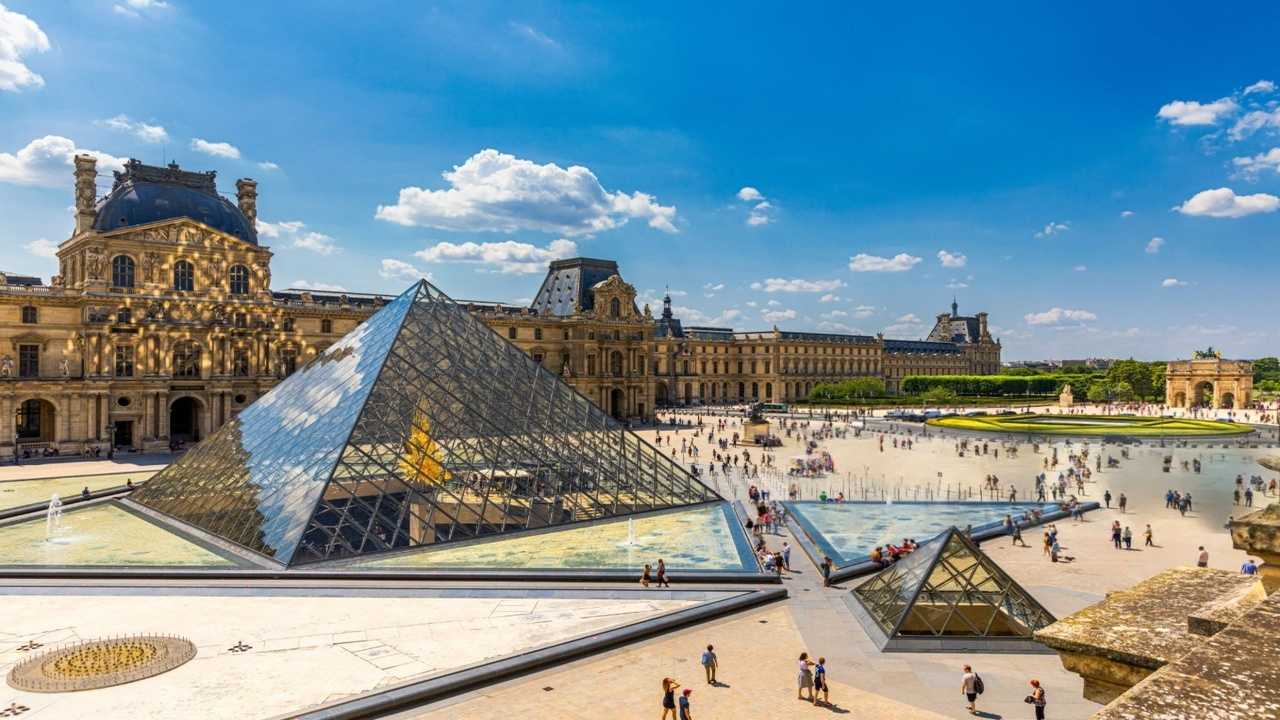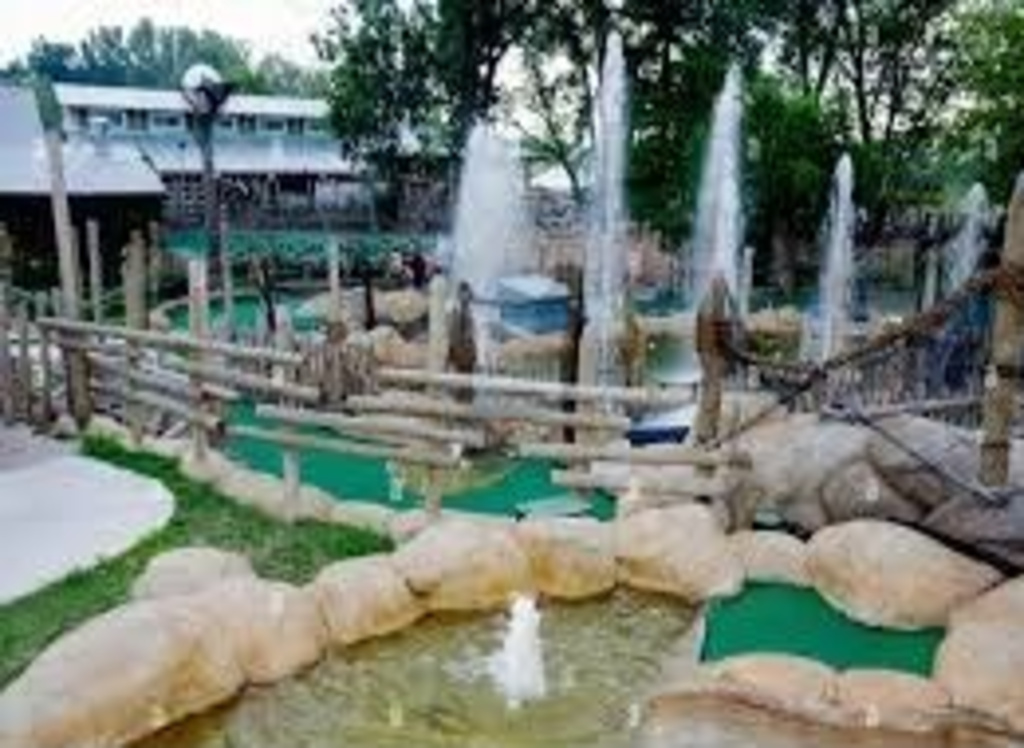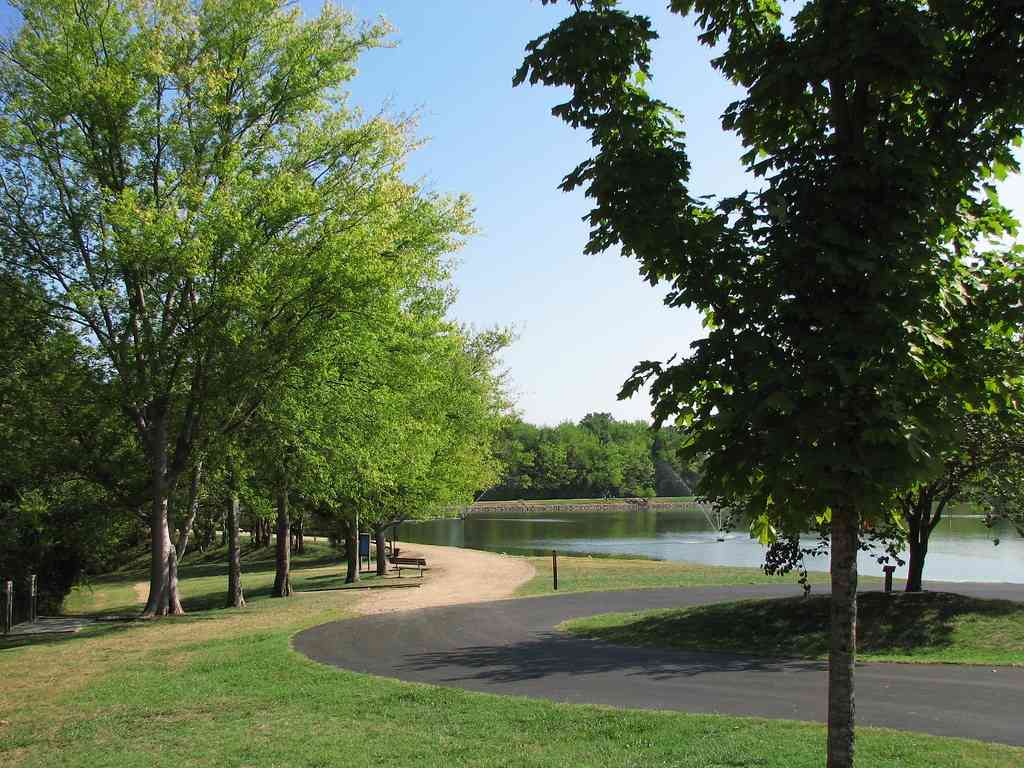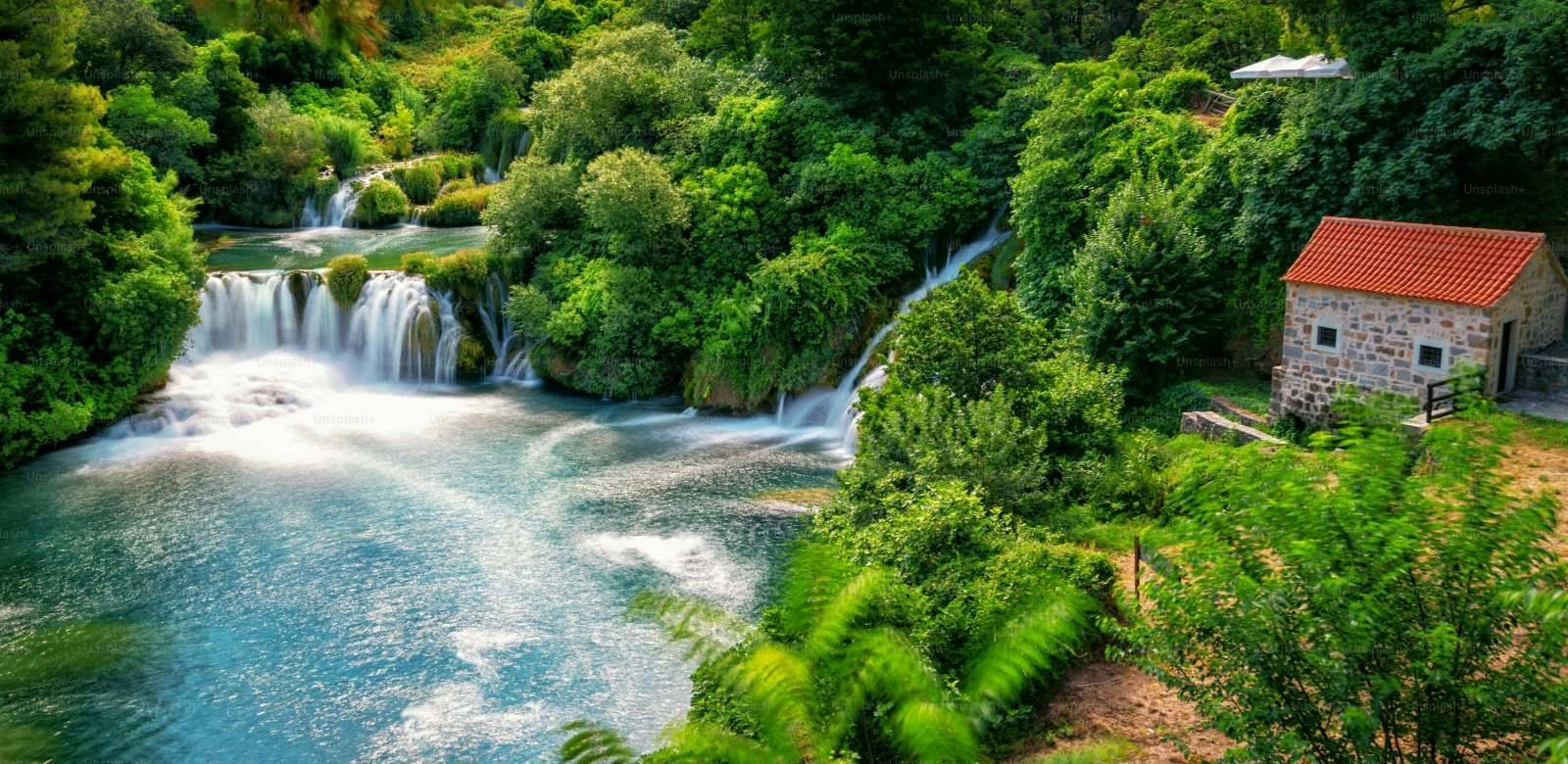
Krka National Park is an outstanding national park in Croatia, named after the Krka River. It is located in central Dalmatia, near the city of Sibenik, and stretches along the middle and lower parts of the river.
It was established in 1985, but what was its purpose? The Krka National Park was created to protect the Krka River and its natural beauty. Here, you can do a plethora of activities, such as scientific research, cultural experiences, educational opportunities, and plenty of recreation and tourism.
It’s a place where you can explore and enjoy nature’s wonders. So, let the fun begin with this blog. Read what you should notice if you go to Krka National Park.
About Krka National Park
Krka National Park has been a protected gem since 1985 and is one of Croatia’s top natural attractions. This vast Park covers about 109 square kilometers of untouched wilderness, featuring the highest density of wild lavender in Europe and supporting diverse ecosystems.
If you are a nature lover, this ParkPark will be a paradise for you! It holds nearly 900 plant species, over 200 bird species, and 18 types of Fish. Hence, science, botany, and zoology students only have to go somewhere besides Krka National Park to study their relatives.
In addition, you’ll spot ospreys, eagles, owls, and falcons hunting in their natural habitat, making bird watching an unforgettable experience. Don’t miss the Park’sPark’s stunning waterfalls, which are impressive in Croatia.
A daily entry fee allows you to explore and enjoy this natural wonder at your own pace. Come and experience the magic of Krka National Park!
Geography of Krka National Park
Krka National Park is in Šibenik-Knin County. It covers 109 square kilometers along the Krka River, extending two kilometers from Knin to Skardin and including the lower part of the Cikola River.
The Park is so big that most of the area is still untouched. It has incredible natural beauty and diverse ecosystems. It is home to Europe’s second-highest lavender density, attracting many wasps and bees.
Flora & Fauna of the Park
As we have seen, Krka National Park is a biodiversity hotspot, home to various plant and animal species. The Park has diverse animal, bird, and plant habitats, ranging from wetlands and forests to rocky cliffs and meadows, supporting a rich array of flora and fauna.
Flora
Krka National Park is located in Southern Europe. Due to its location and diverse habitat, it is known for its stunning variety of plants and animals. The ParkPark has about 860 types of plants, many of which are unique to the region.
Some notable plants may include the following:
- Chimney bellflower
- Stone bellflower
- Dalmatian pellitory
- Mullein inula
- Illyrian iris
The following are the plants that grow in the hot and dry areas of the ParkPark:
- Wolfen spurge
- Adriatic violet
- Musk thistle
- Thorny Centaurium
- Strawberry spurge
- Bertolon’s sage
Moreover, some plants grow in wet areas along the Krka and Cikola Rivers and the Krka River Valley, such as:
- Meadow squill
- Knotweed
- European hornbeam
- Wood melick
- Lady orchid
Hence, there are a variety of plants to capture with eyes or cameras or to study for educational or research purposes.
Fauna
When we talk about the Fauna of the Park – it’s huge, just like Flora! It is home to 18 species of Fish, including 10 found nowhere else in the world. Hence, it makes it a top natural treasure. You can spot Brown trout and Dalmatian barbel gudgeon fish in the Krka River.
Furthermore, the river is surrounded by diverse habitats, like reed patches, lakes, and swamped meadows, which attract many amphibians and birds. Reptiles thrive in the thick brush and stone quarries nearby.
There are 222 birds in ParkPark. Hence, it is one of Europe’s most important areas for birdwatching, especially during spring and autumn migrations. There are also Birds of prey, such as:
- Osprey
- Short-toed eagle
- Golden eagle
- Bonelli’s eagle
- Lanner falcon
- Peregrine falcon
Other interesting birds include the Eurasian eagle owl, European bee-eater, and griffon vulture. In addition to birds, there are 18 species of bats, many of which are endangered or near extinction in other parts of Europe. These include the long-fingered bat, Daubenton’s bat, and the threatened European otter.
Places to Visit
Krka National Park has a lot of exciting things to see and do. For example, you can walk on different paths, join sightseeing tours, enjoy boat trips, and visit souvenir shops. Moreover, there’s also a museum and some excellent restaurants. Near the ParkPark, you can find the ruins of old Roman fortresses called Čučevo, Nečven, Bogočin, Ključica, and Burnum. Check out the following parts of the ParkPark that you must visit:
1. Skradinski Buk
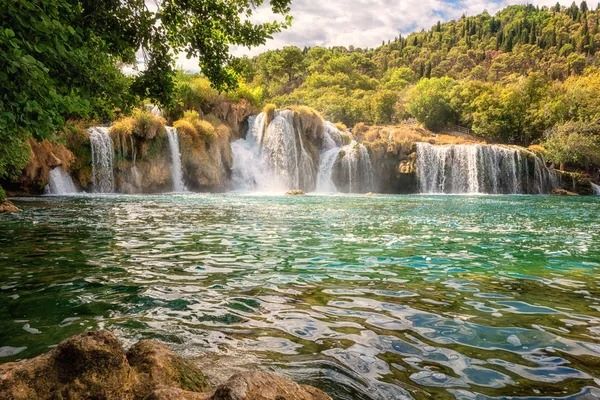
Skradinski Buk is one of the most stunning spots in the Park. It is a vast and clear natural pool with tall waterfalls on one end and smaller cascades on the other. It is the lowest of three waterfall groups along the Krka River.
In an area 400 meters long and 100 meters wide, there are 17 waterfalls with a total height drop of 47.7 meters. The amazing rock formations, lush plants, and the way light dances on the water make Skradinski Buk one of Europe’s most beautiful calcium carbonate waterfalls.
In Winter, 43 cubic meters of water flow per second, while 18 cubic meters per second in summer, averaging 55 cubic meters annually. It’s the most extensive travertine cascade system in Europe.
2. Roski Slap
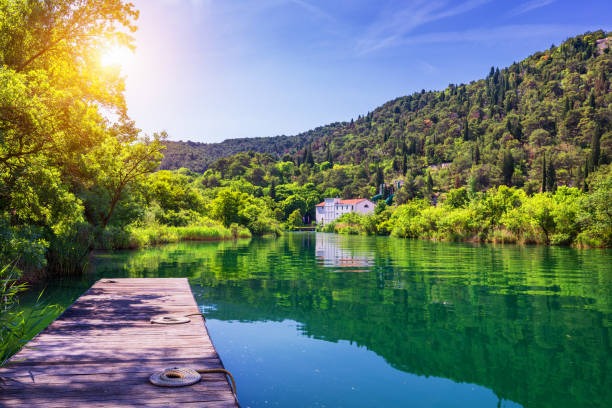
Roski Slap, near Miljevci, is the second most visited spot in Krka National Park. It is the sixth waterfall on the Krka River. Here, you can stroll through the area on trails that offer stunning views, and there’s also a hiking path.
You can visit Roski Slap any time of the year. The easiest way to get there is by taking one of the excursion boats run by the ParkPark, but you can also drive there using a public road.
3. Monastery
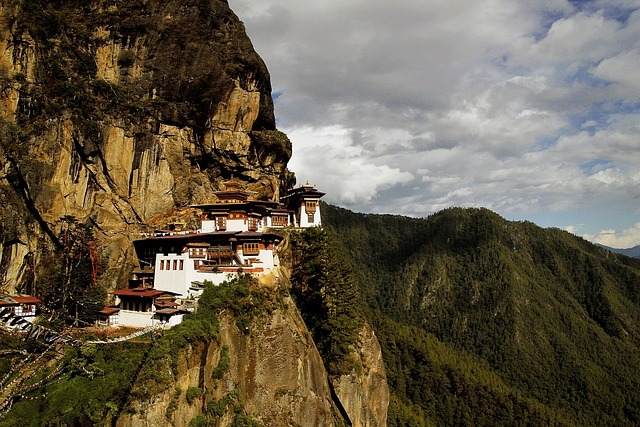
There is an island inside the ParkPark known as Visovac. It was established when Louis I ruled Hungary. On this island stands the Visovac Monastery, which the Franciscans built in 1445 near Miljevci. You can reach the island by taking a boat tour from Skradinski Buk.
The Park also houses the Krka Monastery, an Eastern Orthodox monastery founded in 1345. It’s a spiritual center of the Orthodox Dalmatian Eparchy and was first mentioned in writing in 1402. Jelena Šubić, the sister of Serbian Emperor Dušan, dedicated it as a pious gift. The monastery underwent construction and renovations until the late 18th century.
Activities and Attractions
People of all ages can find activities and attractions to see here. What are you looking for—delving into its history, exploring the Park’s natural beauty, or simply relaxing and unwinding? There’s something for everyone!
Hiking and Walking Trails
The ParkPark has a network of well-maintained hiking and walking trails. Hence, you can explore its landscapes here. These trails are of different types, like easy, family-friendly paths and challenging routes for experienced hikers.
One of the most well-loved paths is the Skradinski Buk trail. This trail guides you through vibrant forests and beside the Krka River to reach the magnificent Skradinski Buk Waterfall.
Boat Tours
What is the most lovely way to explore Krka National Park? It’s a boat tour! You can experience a unique perspective of the Park’s waterfalls, lakes, and islands. One of the most popular boat tours is the visit to Visovac Island, including a visit to the Visovac Monastery.
Swimming
Among all the waterfalls of the river, Skradinski Buk is the only waterfall that allows you to go swimming. You can get a refreshing escape here. Moreover, the natural pools at the waterfall’s base are perfect for relaxing swimming.
Watching Wildlife
People who love to watch wildlife on TV have a great chance to see them live in the Krka National Park. The Park has a rich collection of bird species, making it a good destination for birdwatching. You can also spot other wildlife, including Fish, mammals, reptiles, and amphibians.
Educational Programs
Students have good news! The Park offers many educational programs and workshops, but not only for students; other visitors can also have them. This opportunity lets you quickly learn about the Park’s ecosystems, wildlife, and history. For your enhanced experience, there are guided tours, interactive exhibits, and hands-on activities.
How to Get There
What do you prefer—a car, a boat, or a bus? These three ways make it easy to access the Park. Its two main entrances are near the towns of Skardin and Lozovac. Moreover, you can park at both entrances. Also, the shuttle bus operates in the Park to move people from one spot to another.
Entrance Fees
The entrance fee varies according to the time of the year and duration of the visit. Seniors, students, and children can get a discount. The entrance fee gives access to all the main attractions, including the waterfalls, hiking trails, and historical sites.
Conclusion
Finally, Krka National Park offers you a variety of attraction sites, activities to do, and many waterfall scenes to capture. What else would one want? It’s a whole vacation package; you shouldn’t have to go anywhere else to enjoy your holidays. So, let’s go!
FAQs
Can You Swim in Krka National Park?
As of January 2021, swimming in the Park Park and river waterfalls is prohibited to protect the environment, wildlife, and other natural resources except the Skradinski Buk waterfall. In addition, the ParkPark provides a complimentary boat service to nearby beaches where you can enjoy swimming.
Is Karka Park Worth it?
Yes, it is! Many visitors have labeled it a must-see spot. It is famous for its stunning waterfalls, rivers, and lush green landscapes. It’s also praised for its thoughtful design, which aims to protect the environment while still providing access for visitors to enjoy its natural beauty.
What Should I Wear to Go to Krka?
When planning a visit to Krka National Park, it’s advisable to dress in light and comfortable clothing that will help keep you cool and dry, considering the prevailing weather conditions. Choose sturdy shoes that provide good support for walking on various surfaces.
For hiking, hiking shoes are recommended! It is also wise to avoid flip-flops or sliders since some areas can be slippery. Hence, these preparations will make your visit comfortable and peaceful.

